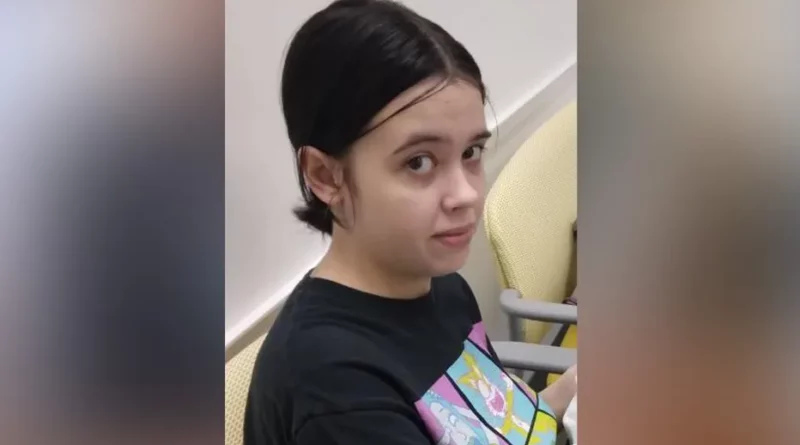Miranda Corsette 16-Year Old Body Found Dismembered After Meeting Guy From a Social Dating App in St. Petersburg Florida
In February 2025, the Gulf Coast region of Florida was shaken by the tragic murder of sixteen-year-old Miranda Corsette, a young girl from Gulfport whose life was brutally cut short in an act that shocked both her local community and the wider public. The crime—believed to have been committed by two adults she encountered online—exposed disturbing details of predatory behavior, alleged torture, and an attempt to conceal the killing through dismemberment and disposal of her remains in a dumpster in Ruskin, Florida. As the investigation unfolded, it became clear that this was not a spontaneous act of violence, but rather the culmination of a calculated and sinister series of events.
Miranda Corsette: A Brief Background
Miranda Corsette was known to her family and friends as a bright, caring, and creative teenager. She was navigating the challenges and excitement of adolescence, balancing school, friendships, and her hobbies. Like many teens, Miranda engaged with others on social and dating apps, a world that offered both opportunities for connection and dangers that she—like most young users—could not have fully anticipated.
Her disappearance and death would become a painful reminder for her community of the vulnerabilities faced by young people in the digital age.
The Initial Contact
Investigators allege that Miranda first came into contact with thirty-five-year-old Steven Gress through a social or dating application in mid-February 2025. The initial meeting reportedly occurred around Valentine’s Day, when Gress invited her to spend time with him at his home in St. Petersburg. The following day, Miranda returned to see him, this time also encountering thirty-seven-year-old Michelle Brandes, who lived with Gress.
Police believe that Miranda’s return visit marked the start of a prolonged and dangerous situation. According to investigators, she did not return home after that point. Instead, she remained in the presence of Gress and Brandes for several days—days that would later become central to the criminal case against them.
The Days Leading to Her Death
The timeline constructed by detectives places Miranda in the company of Gress and Brandes between February 15 and approximately February 20–24, 2025. It is during this period that police allege Miranda endured physical abuse, confinement, and torture.
Search warrant affidavits and witness statements suggest that other individuals may have been aware she was being held against her will but did not alert law enforcement. These claims, if proven, point to a disturbing breakdown in the moral duty to protect a vulnerable minor.
The Estimated Time of Death
Detectives believe Miranda was killed sometime between February 20 and February 24, 2025. The exact cause of death has not been publicly disclosed in full detail due to the ongoing nature of the case, but authorities have described the circumstances as exceptionally violent. The nature of her injuries and the alleged acts committed after her death have been characterized as evidence of extreme malice and intent.
The Missing Person Report
On February 24, 2025, Miranda’s family reported her missing to Gulfport Police. The urgency of the report was fueled by the fact that she had been in regular contact with her family and friends prior to her disappearance. Her sudden silence and absence were deeply out of character, raising immediate alarm.
Law enforcement agencies quickly began coordinating across jurisdictions, aware that time was a critical factor when investigating a missing teenager. Leads were developed through her social media and phone records, eventually pointing toward her last known interactions with Gress.
The Witness Tip and Break in the Case
The turning point in the investigation came on March 6, 2025, when a witness contacted police with information suggesting Miranda had been kidnapped and possibly killed. The tip also indicated that her remains had been dismembered and discarded in a dumpster, leading officers to search disposal sites in and around Ruskin, Florida.
The grim discovery of human remains matching Miranda’s description in a Ruskin dumpster confirmed the worst fears of her family and investigators. Forensic analysis later identified the remains as hers.
The Arrests of Steven Gress and Michelle Brandes
On March 7, 2025, St. Petersburg Police announced the arrest of Steven Gress, charging him with first-degree murder. The following day, March 8, Michelle Brandes turned herself in to authorities and was also charged with first-degree murder. Both were booked into the Pinellas County Jail.
Court filings allege that the pair not only caused Miranda’s death but also attempted to hide the crime through the dismemberment and disposal of her body. The charges reflect the severity of the allegations, with prosecutors indicating the possibility of pursuing the death penalty.
The Role of Digital Evidence
The investigation heavily relied on digital evidence, including location data from phones, records from the social/dating app where Miranda and Gress initially connected, and surveillance footage from nearby businesses. These digital trails provided prosecutors with a timeline of movements, interactions, and locations that corroborated key elements of the witness testimony.
Community Reaction
The murder of Miranda Corsette provoked deep outrage in the Gulfport, St. Petersburg, and Ruskin communities. Vigils were organized in her memory, with attendees wearing purple—the color often associated with awareness of violence against women and children. Speakers at these gatherings called for stronger protections for minors using online platforms and for more vigilance among friends, families, and neighbors.
Local advocacy groups used Miranda’s case to highlight the risks of online predation, urging parents to discuss online safety with their children and to monitor their digital communications without undermining trust.
The Legal Path Forward
At the time of writing, both Gress and Brandes are awaiting trial. The first-degree murder charges carry the potential for life imprisonment or the death penalty in Florida. Prosecutors have signaled that the aggravating factors—age of the victim, the alleged torture, and the dismemberment—could justify the harshest possible sentence under state law.
Defense attorneys are expected to challenge aspects of the evidence, including the timelines and the role of each defendant. Pretrial hearings are likely to focus on admissibility of statements, the handling of forensic evidence, and the credibility of witnesses who may have had knowledge of the crime.
A Case That Resonates Beyond Florida
While the murder occurred in Florida, the story of Miranda Corsette has been covered widely across the United States and beyond, resonating with families, law enforcement agencies, and advocacy organizations. It serves as both a personal tragedy and a case study in the dangers posed by online predators, the vulnerabilities of teenagers, and the necessity of swift intervention when warning signs appear.
Remembering Miranda
Beyond the horrifying details of the crime, those who knew Miranda stress the importance of remembering her as a person—not merely as a victim. Friends recall her sense of humor, her creativity, and her kindness toward others. Her family has expressed their desire that her memory be honored through initiatives that protect other young people from similar fates.
In the wake of her death, community members have begun fundraising for scholarships in her name, aiming to provide opportunities for other teens in Gulfport and the surrounding areas. The hope is that her legacy will inspire positive change, even as the legal system seeks justice for the crime committed against her.
Discover more from City Towner
Subscribe to get the latest posts sent to your email.



